Are you seeking the ultimate adventure amidst the towering peaks of the Himalayas? Look no further! Nepal boasts some of the most exhilarating destinations for peak climbing in Nepal, offering a blend of breathtaking scenery and thrilling experiences. Classified as “trekking peaks” by the Nepal Mountaineering Association (NMA), these majestic summits range between 5,000m to 7,000m, making them accessible yet challenging for adventurers of all levels. With a total of 15 peaks below 7000m (22,970 ft.), Nepal provides a plethora of options for those craving the thrill of high-altitude exploration. While most of these peaks are non-technical from a mountaineering perspective, they still demand sound health, physical fitness, and a keen sense of adventure. Whether you’re a seasoned climber or a novice adventurer, here are top 10 of the best destinations for peak climbing in Nepal, each offering a unique and unforgettable experience.
Top 10: Peak Climbing Destinations in Nepal
- Everest Base Camp Trek With Island Peak Climbing
- Mera Peak Expedition
- Lobuche Peak Climbing
- Pisang Peak Climbing in Annapurna Region
- Yala Peak Climbing in Langtang Valley
- Naya Kanga Peak Climbing
- Chulu East Peak Climbing
- Langshisha Ri Peak Climbing in Langtang Region
- Paldor Peak Climbing
- Hiunchuli Peak Climbing in Annapurna Sanctuary
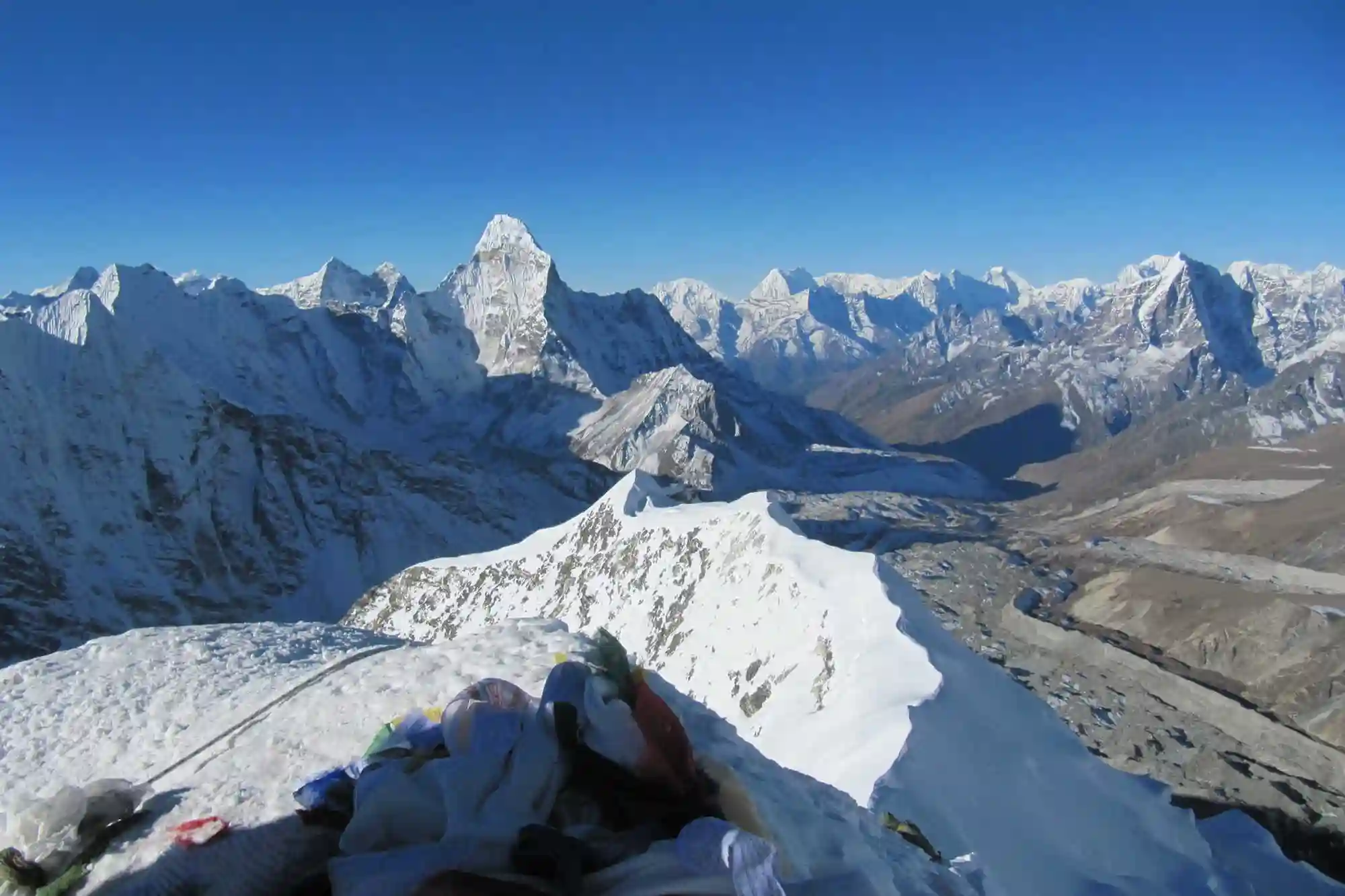
Island Peak
1. Everest Base Camp Trek with Island Peak Climbing:
Located in the Khumbu region, Island Peak (Imja Tse) stands tall at 6,189 meters (20,305 feet) above sea level. The journey to the summit typically begins with a scenic flight to Lukla, followed by a trek through the picturesque villages of Namche Bazaar and Dingboche. From Base Camp, climbers navigate through rocky terrain and glaciers before reaching the challenging ice wall leading to the summit.
Island Peak is classified as a challenging climb, suitable for experienced trekkers with prior high-altitude experience. Technical skills in ice climbing and use of crampons and ice axes are essential.
Climbing permits are required for Island Peak, obtainable through the Nepal Mountaineering Association (NMA) or a licensed trekking agency. Additionally, a Sagarmatha National Park Entry Permit is mandatory for trekkers entering the Khumbu region.
The optimal climbing seasons for Island Peak are during the pre-monsoon (March to May) and post-monsoon (late September to November) periods when weather conditions are favorable and skies are clear.

Mera Peak
2. Mera Peak Expedition
Mera Peak, standing at 6,476 meters (21,247 feet), is situated in the remote Hinku Valley of the Everest region. The journey to Mera Peak involves a scenic flight to Lukla, followed by a trek through dense forests, alpine meadows, and high passes. From Base Camp, climbers ascend through glaciated terrain, traversing crevasses and seracs, to reach the summit.
Mera Peak is considered a non-technical climb, suitable for novice climbers with basic mountaineering skills. However, acclimatization and physical fitness are crucial due to the altitude and endurance required.
The ideal climbing seasons for Mera Peak are the pre-monsoon (March to May) and post-monsoon (late September to November) periods, offering stable weather conditions and clear skies for summit attempts.
3. Lobuche Peak Climbing
The ascent to Lobuche Peak typically begins with a flight to Lukla, followed by a trek to Everest Base Camp. From there, climbers head towards Lobuche Base Camp, situated near the Khumbu Glacier. The climb involves navigating through rocky terrain and ascending steep slopes, culminating in a final push to the summit.
Lobuche Peak climbing is considered moderately challenging to technically difficult. Climbers encounter steep sections, icy slopes, and crevasses, requiring prior high-altitude trekking experience and basic mountaineering skills.
The optimal time for Lobuche Peak climbing is during the pre-monsoon (March to May) and post-monsoon (late September to November) seasons. These periods offer stable weather conditions, clear skies, and favorable climbing conditions.
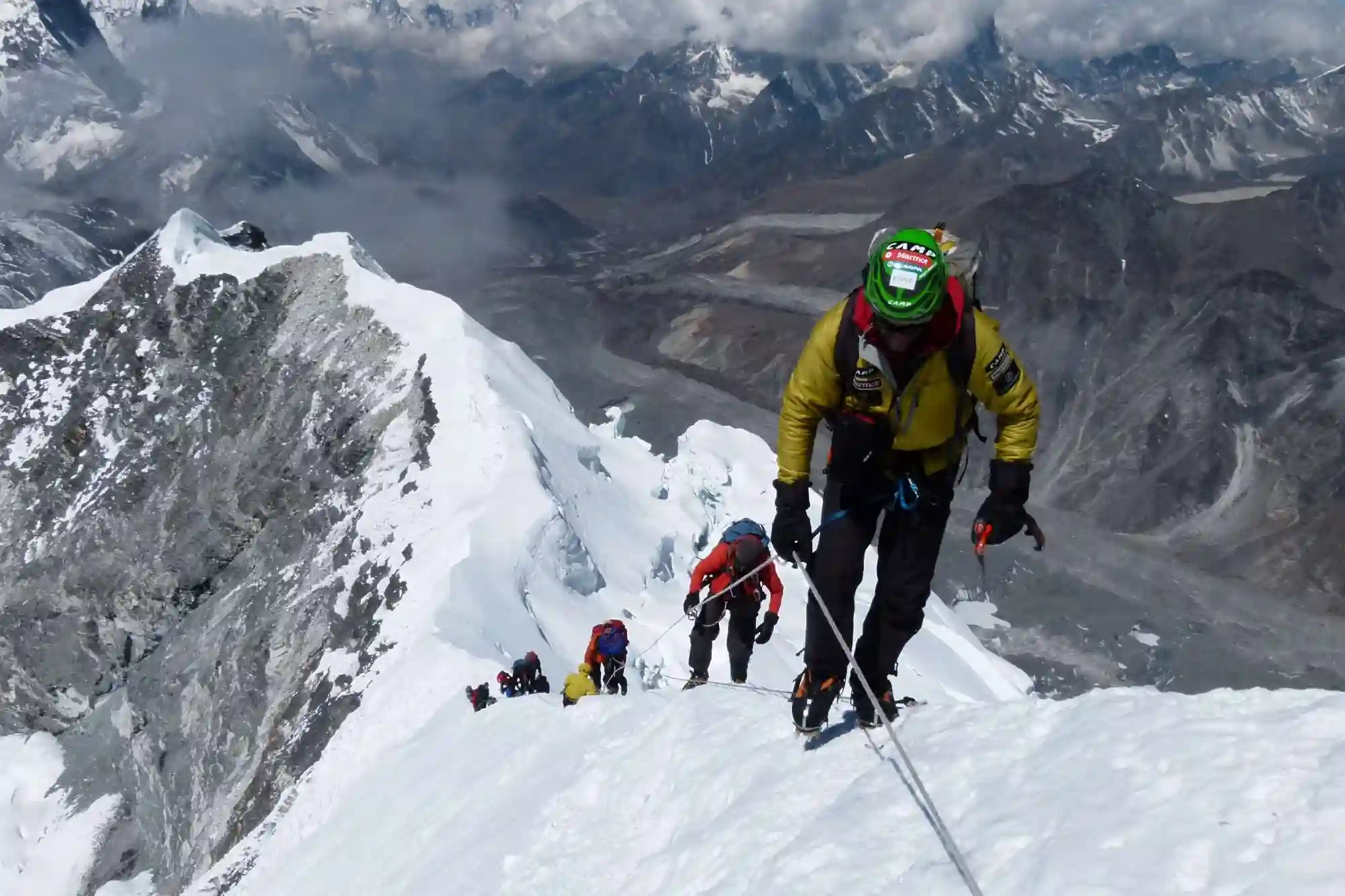
Pisang Peak Climbing
4. Pisang Peak Climbing in Annapurna Region
Pisang Peak is situated in the Annapurna region, with the trek starting from the picturesque town of Besisahar. Climbers follow the Annapurna Circuit trail, passing through lush forests, terraced fields, and traditional villages. From Base Camp, the ascent to the summit involves traversing rocky ridges and ascending snow slopes.
Pisang Peak climbing is moderately challenging, suitable for climbers with prior trekking experience and basic mountaineering skills. The climb includes sections of steep terrain and requires acclimatization to the altitude.
The best time for Pisang Peak climbing is during the pre-monsoon (March to May) and post-monsoon (late September to November) seasons. These periods offer pleasant weather, clear skies, and stunning views of the surrounding Himalayas.

Yala Peak Climbing
5. Yala Peak Climbing in Langtang Valley
Yala Peak is located in the Langtang region, accessible from Kathmandu with a scenic drive to Syabrubesi. The trek follows the Langtang Valley trail, passing through rhododendron forests, alpine meadows, and yak pastures. Climbers establish Base Camp near Kyangjin Gompa before ascending the peak.
Yala Peak climbing is moderately challenging, suitable for novice climbers with basic mountaineering skills. The climb involves traversing snow slopes and rocky terrain, with some technical sections near the summit.
The optimal time for Yala Peak climbing is during the pre-monsoon (March to May) and post-monsoon (late September to November) seasons. These periods offer stable weather conditions, clear skies, and breathtaking views of the Langtang range.
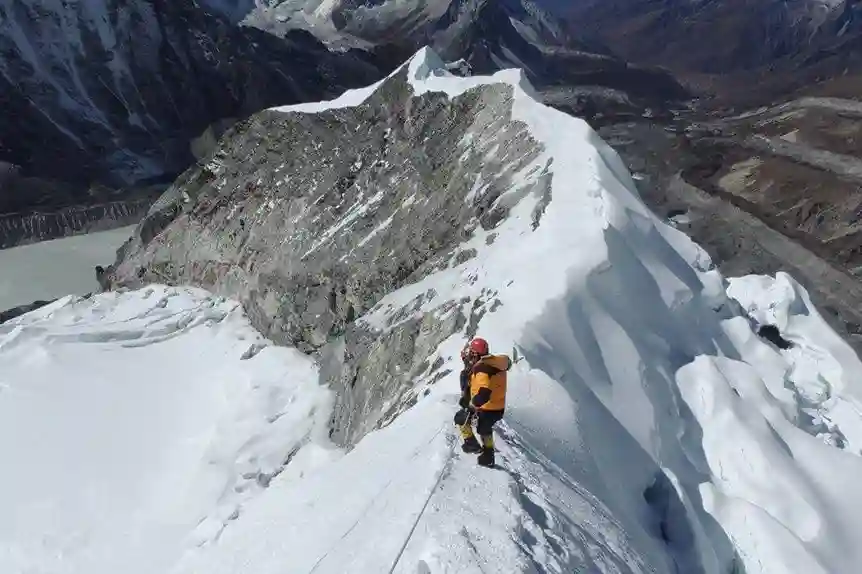
Naya Kanga Peak
6. Naya Kanga Peak Climbing
Naya Kanga Peak, also known as Ganja La Chuli, is situated in the Langtang region, accessible from Kathmandu with a drive to Syabrubesi. The trek follows the Langtang Valley trail, passing through lush forests and traditional Tamang villages. Climbers ascend through rocky terrain and glaciated slopes to reach the summit.
Naya Kanga Peak climbing is moderately challenging, suitable for climbers with prior trekking experience and basic mountaineering skills. The climb involves steep sections and glacier crossings, requiring physical fitness and acclimatization.
The best time for Naya Kanga Peak climbing is during the pre-monsoon (March to May) and post-monsoon (late September to November) seasons. These periods offer favorable weather conditions, clear skies, and stunning views of the Himalayan landscape.

Chulu East Peak Climbing
7. Chulu East Peak Climbing
The route to Chulu East begins with a trek from Besisahar in the Annapurna region. Climbers traverse through lush forests, charming villages, and alpine meadows before reaching Chulu Base Camp. Chulu East Peak climbing is moderately challenging, suitable for climbers with prior trekking experience. Basic mountaineering skills and good physical fitness are recommended.
The best time for Chulu East Peak climbing is during the pre-monsoon (March to May) and post-monsoon (late September to November) seasons, offering favorable weather conditions and clear views.
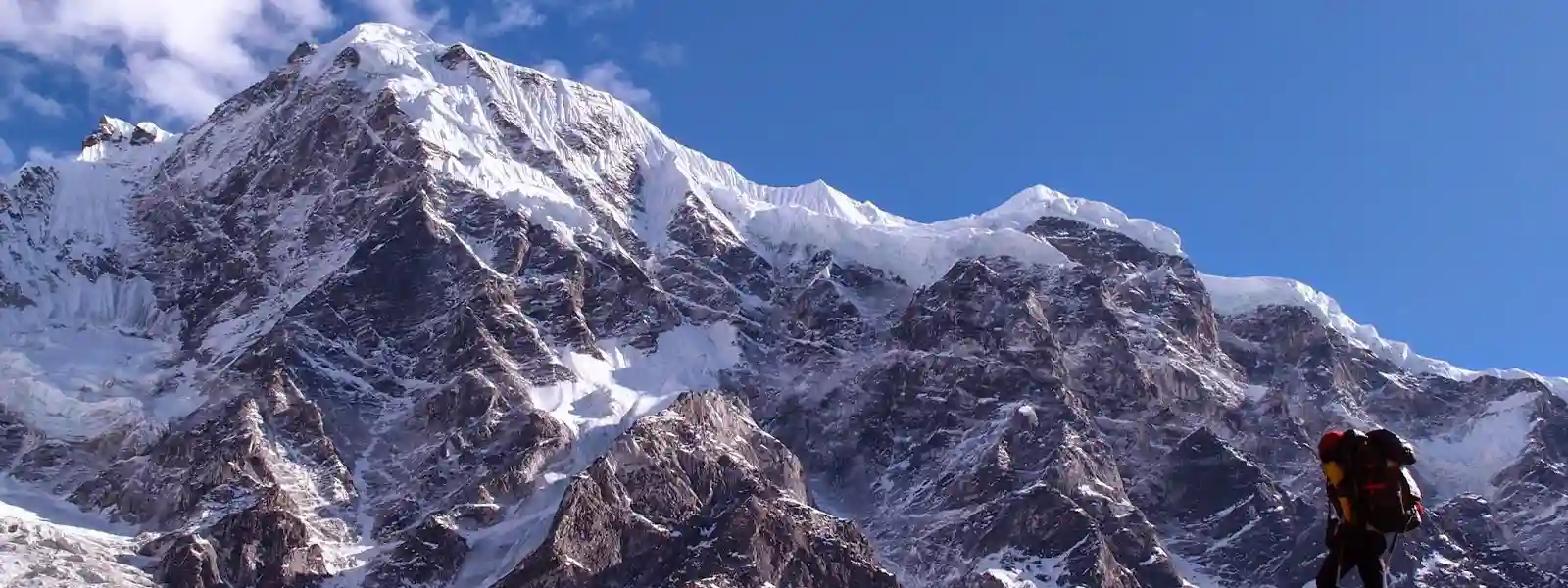
Langsisa Ri Peak Climbing
8. Langsisa Ri Peak Climbing in Langtang Region
The route to Langsisa Ri starts with a trek from Syabrubesi in the Langtang region. Climbers pass through rhododendron forests, glacial valleys, and pristine lakes before reaching Langsisa Base Camp. Langsisa Ri Peak climbing is moderately challenging, suitable for climbers with basic mountaineering skills and high-altitude trekking experience. The ascent involves steep sections and glacier crossings.
The optimal climbing seasons for Langsisa Ri are during the post-monsoon (late September to November) and pre-monsoon (March to May) periods, offering stable weather conditions and clear skies.
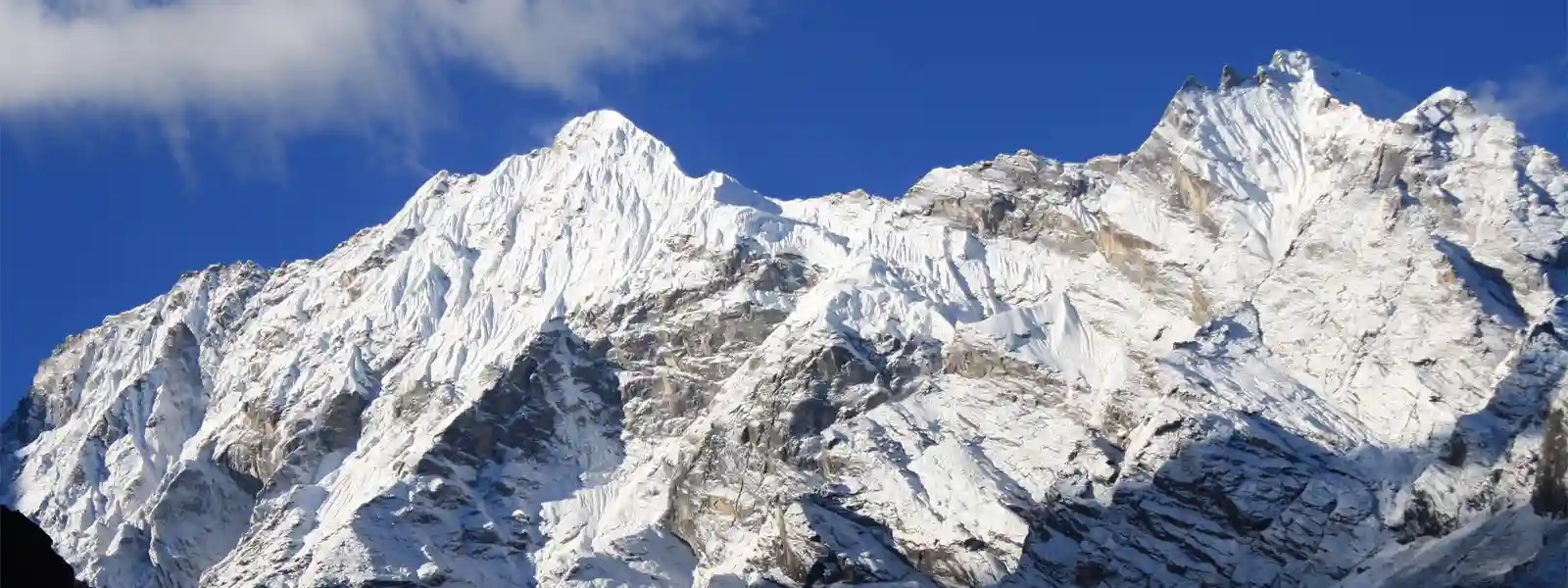
Paldor Peak Climbing
9. Paldor Peak Climbing
The route to Paldor Peak typically begins with a trek from Syabrubesi in the Langtang region. Climbers pass through picturesque villages, terraced fields, and rugged landscapes before reaching Paldor Base Camp.
Paldor Peak climbing is moderately challenging, suitable for climbers with basic mountaineering skills and high-altitude trekking experience. The ascent involves glacier travel and technical sections.
The best time for Paldor Peak climbing is during the post-monsoon (late September to November) and pre-monsoon (March to May) seasons, offering stable weather conditions and clear views.
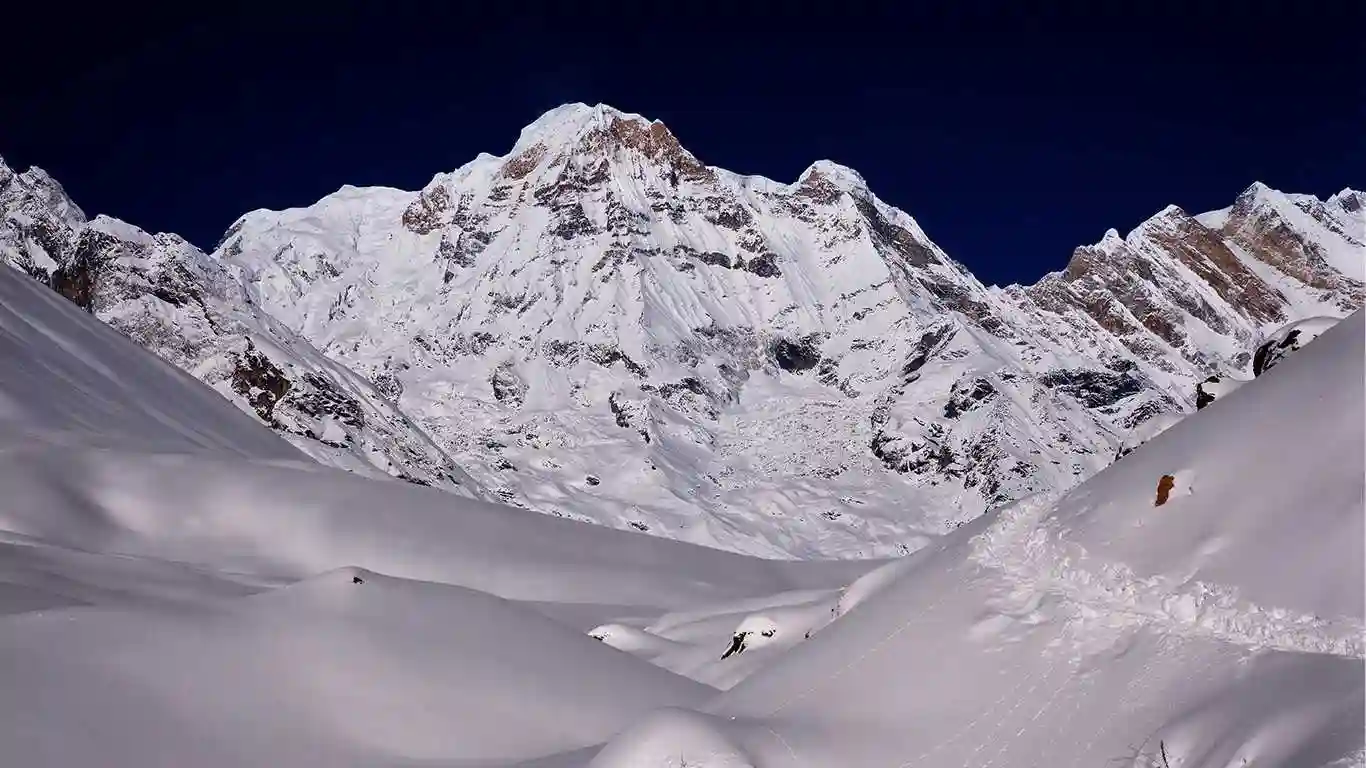
Hiunchuli Peak
10. Hiunchuli Peak Climbing in Annapurna Sanctuary
The route to Hiunchuli Peak starts with a trek from Pokhara in the Annapurna region, passing through lush forests, terraced fields, and traditional Gurung villages. Climbers then ascend towards Hiunchuli Base Camp. Hiunchuli Peak climbing is technically challenging, with steep sections and exposed ridges. Climbers require prior mountaineering experience and proficiency in rock and ice climbing.
The optimal climbing seasons for Hiunchuli Peak are during the pre-monsoon (March to May) and post-monsoon (late September to November) periods, offering stable weather conditions and clear skies.

